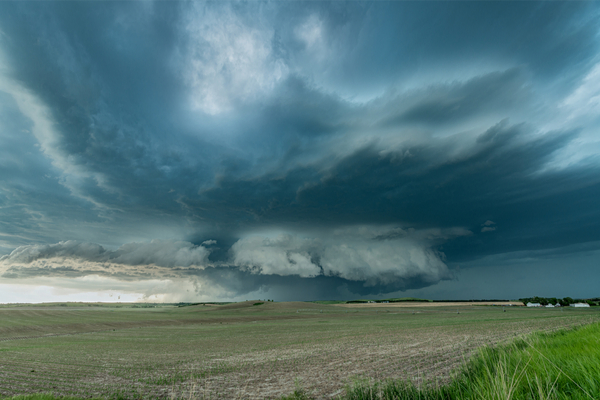Accuweather recently shared video of a dust devil spinning up a neighborhood baseball field in Florence, Alabama. According to reports, it was a mostly sunny day in mid May, and a youth baseball league was outside practicing when a tornado-like whirlwind seemed to appear out of nowhere, sweeping across the infield as if it was trying to round the bases. Footage captured multiple young athletes dashing harmlessly through the swirling dust-filled vortex as it traveled across the baseball diamond and outfield.
In reality, these short-lived “whirlwinds” are relatively common across the world and typically harmless. They can range in diameter size anywhere from 10 to 300 feet, with a height generally 500 to 1,000 feet. According to the National Weather Service, wind speeds within dust devils typically range up to 60 mph.
Fun Fact: around the world, these whirlwinds are referred to by various names. They are called “Shee-gaoithes” or “Fairy winds” in Ireland. Meanwhile, in Australia, the vortexes are known as a “Willy-willy.”
Dust devils form due to strong surface heating, sometimes over asphalt, fields or dirt. A clear afternoon sky and light winds help to create prime conditions for these whirlwinds since the sunshine can quickly warm the ground and leave a pocket of warm air directly above it.
The warm air will rush upward and create a rotating vortex as air surges inward at the bottom to fill the void. A commonly used example to explain this phenomenon is a spinning ice skater. The skater can begin spinning with their arms outstretched; however, when the skater pulls their arms inward, their rotational speed increases dramatically. The funnel-like chimney of swirling dust will gradually dissipate when the air becomes mixed and there is no longer a significant difference in temperatures between the two layers of air.
Sometimes, the whirlwinds can pick up more than just dust and dirt. In Tangshan, a city located within the Hebei Province of northern China, a video was captured of a large dust devil that picked up black iron particles from a local iron mine. Workers and nearby residents watched as a massive vortex containing black powder from the mine rotated rapidly above an inclined patch of soil.
All large cyclones (for example, hurricanes) and 99% of tornadoes in the Northern Hemisphere rotate in a counterclockwise direction, as dictated by the spinning of the Earth (Coriolis Effect). Dust devils, however, are smaller and less affected by the Earth’s spin. In a research paper from 2018, it was estimated that it was equally as probable that a dust devil would spin clockwise as counterclockwise. Clockwise rotation, observed in both of these dust devils, is referred to by meteorologists as anti-cyclonic.
In cases such as these, what typically is a harmless wind phenomenon can quickly turn into a hazard to people and property in the vicinity. Flying debris can become a risk for those nearby, along with potential respiratory problems as particulates are spread about the air. It’s important to note that no injuries or casualties were reported from the black dust devil.
—
Photo Credit: Joe Belanger / Shutterstock.com
